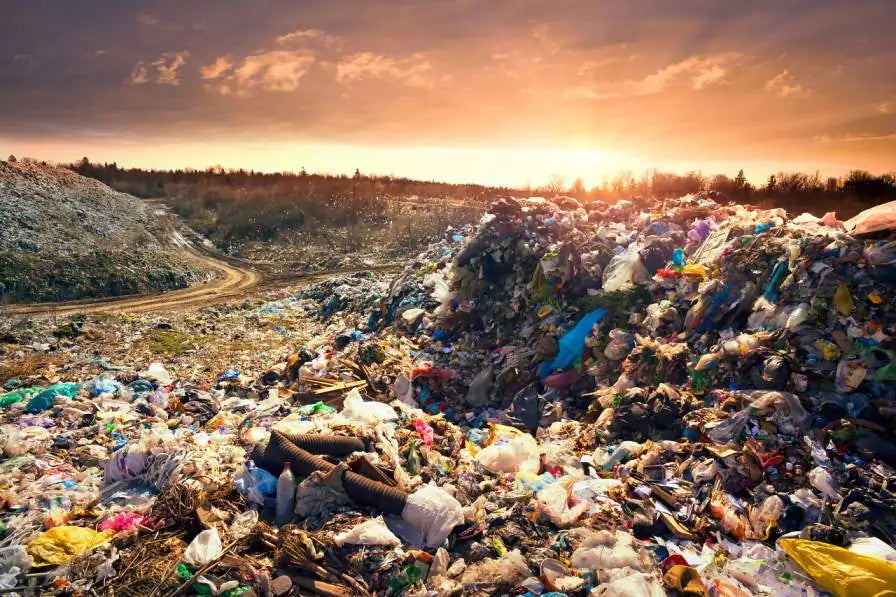OR
Express Checkout

In the UK, the problem of ever decreasing space for our landfill sites has been well documented. Problems such as fly-tipping have received plenty of news coverage too. However, our own rubbish piles are put firmly in perspective when considering the planet’s biggest waste sites. Here, in no particular order, are ten of the world’s most infamous rubbish dumps.

1: - Laogang – Shanghai, China
This site measures a whopping 1000 acres and receives seventy percent of the city’s waste. However, in recent years it has begun to deal with its rubbish effectively. Eighty percent of organic material is now composted and the biogas plant supplies 100,000 households with electricity.
2: - Olusosun Landfill – Lagos, Nigeria
This site is the largest landfill in Africa and receives as much as 10,000 tons of rubbish every day. Some of this is electronic waste from European container ships, which has led to the accusation that Europe is treating Africa as a dumping ground. The site is home to several shanty towns, whose residents make a living searching the rubbish for items to sell.
3: - Sudokwon Landfill – Incheon, South Korea
In terms of the amount of rubbish handled, this is the world’s largest landfill site. As much as seven million tons per year are thought to be deposited here. The site has facilities to produce both water and electricity from the waste, whilst 700,000 trees have also been planted here.
4: - Malagrotta – Rome, Italy
This is Europe’s largest landfill but, until 1984, was an illegal rubbish dump. The methane gas, produced by organic waste, is converted into electricity, but the site has also come under criticism for the chemical contamination it has caused to the local air, water and soil.
5: - Estrutural – Brasilia, Brazil
Latin America’s largest rubbish dump is the size of 194 football pitches. Known to the locals as the catadores, the site is rumoured to be closing, which is a worry to the thousands of people who make a living by collecting newspapers, bottles and cans from amongst the rubbish.

6: - Apex Regional Landfill – Nevada, USA
At 2,200 acres, this is the world’s largest landfill site by size. It receives 9,000 tons of waste daily, but has the capacity to deal with far more, and is reckoned to have a lifespan of a further 250 years. The rubbish emits almost eighteen percent of the nation’s methane gas and the power generating plant, built at a cost of $35 million, supplies the energy needs of 10,000 households.
7: - The Deonar Dumping Ground – Mumbai, India
Set up in 1927, this is India’s oldest and largest landfill site. The waste is the height of an eighteen-storey tower block and recurrent fires have led to the nearby area becoming uninhabitable. It has also caused serious health issues for residents in several districts of Mumbai.
8: -Bordo Poniente – Mexico City, Mexico
Established in 1985, as a place to dump rubble following an earthquake, this site was closed to new rubbish in 2011. During its lifetime, an estimated 70 million tons of waste was deposited here. The Mexican government is now tapping into the site’s methane gas supply to produce electricity.
9: - Lake Karachay – Southern Urals, Russia
Reputedly the most toxic place on earth, Lake Karachay was used by the former Soviet Union as a nuclear dumping ground. The radiation levels are still so high that an hour’s exposure would prove fatal. This is particularly worrying as there are no warning signs to be found in the surrounding area.
10: - The Great Pacific Garbage Patch – Northern Pacific Ocean
Discovered in the late 1980s, this accidental rubbish patch is a gyre of marine debris. The microscopic, plastic particles found here are a disaster for oceanic wildlife. Its size is too big to determine, which makes it the perfect example of the need to prevent waste from entering the water, for any hopes of clearing it up are futile.